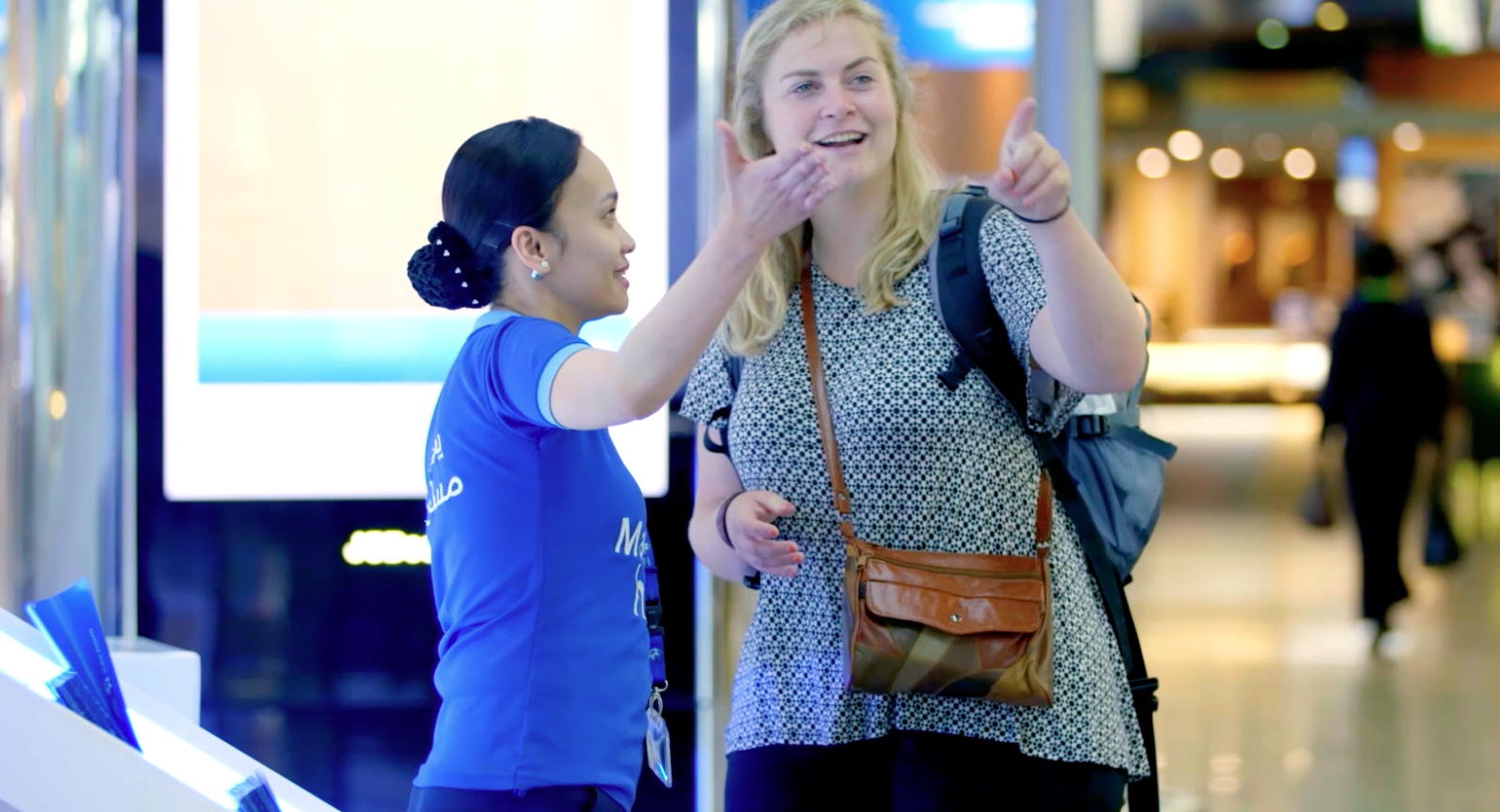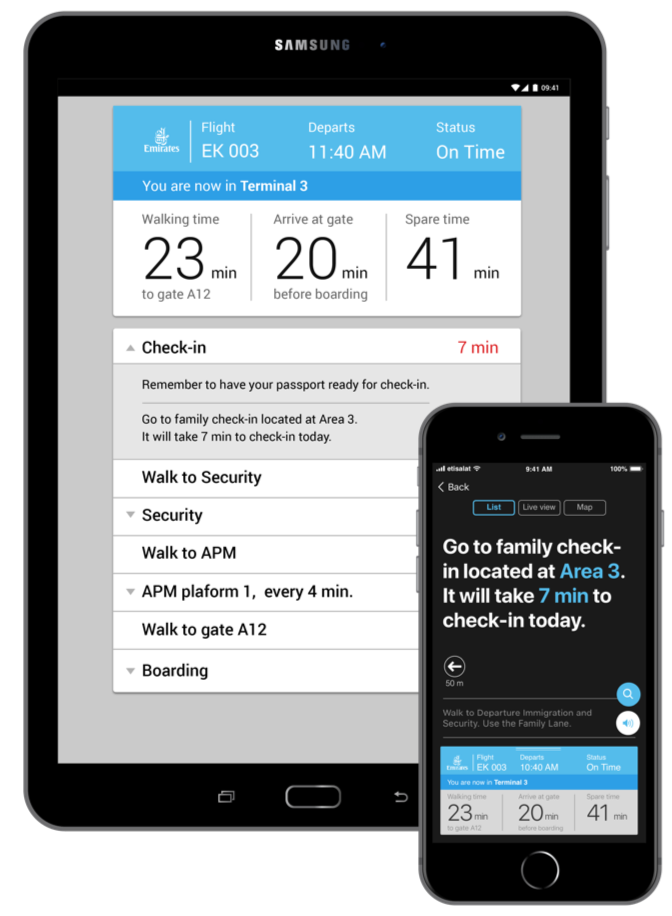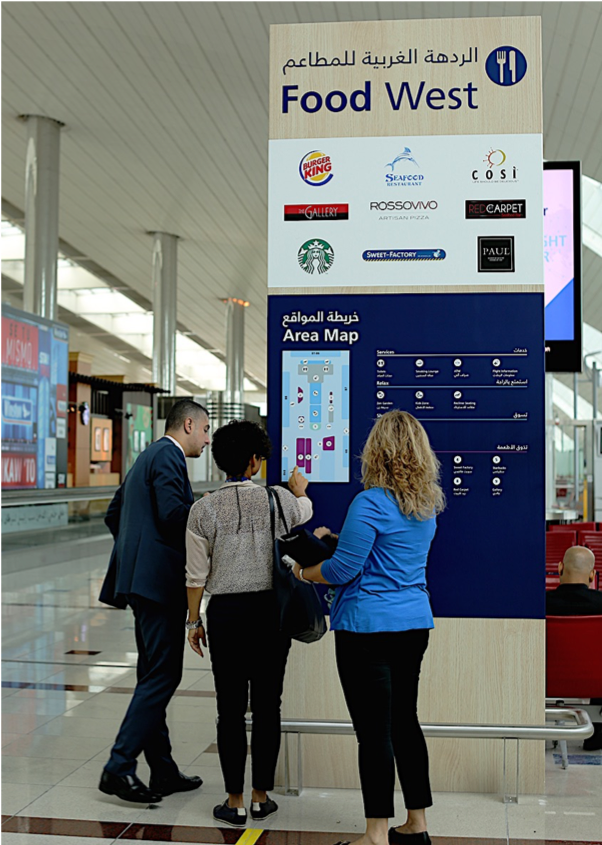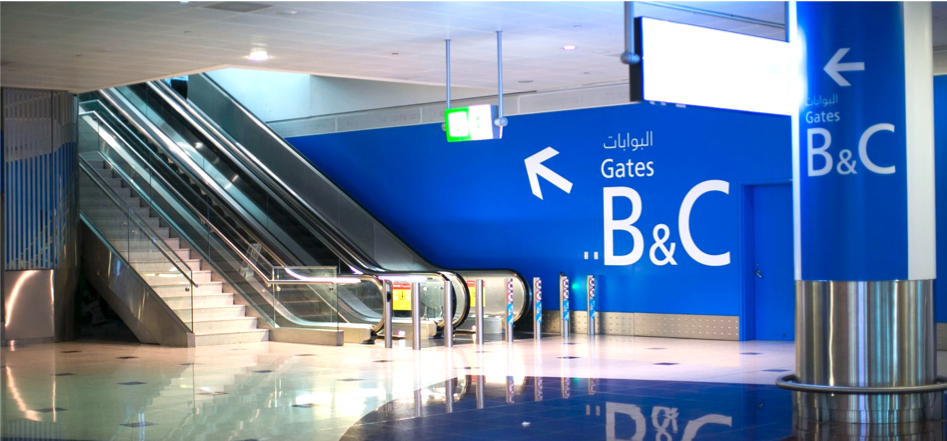Get in touch
9 key learnings from working with Dubai Airports
Here's what we learnt over a decade-long relationship with one of the busiest airport hubs in the world.

Travelling through an airport can be a stressful experience for many people. Whether they’re hurrying to get to where they need to go or they want to enjoy their time in the airport as part of their overall holiday experience, passengers want a smooth journey from start to finish.
We’ve worked with Dubai Airports over the last decade across a variety of projects, including a new and distinctly Dubai Airports passenger experience strategy and vision to deliver their desired business outcomes.
As the busiest airport hub in the world, Dubai Airports were running out of capacity to accommodate the growing number of passengers in their current facility.
An increase in complaints was directly linked to their operational targets, which were not being met in a variety of areas meant they needed to make changes confidently and with a good understanding of what their customers needed and wanted from the airport experience.
Here's what we learnt over a decade-long relationship with one of the busiest airport hubs in the world.
1. Creating a customer experience (CX) vision helps visualise what the future could look like.
In order to expand their current footprint, Dubai Airports needed to define the experience vision and services for that space. So the airport looked at their customers today and how they would evolve to set a future ambition.
Part of our work with Dubai Airports was about future-proofing and making sure they were thinking about the right things for their customer.
Creating a passenger experience vision provided the team with identifying measures to adapt their existing real estate, infrastructure and partnerships to deliver against that vision.
2. A CX vision helps make a case for change
A CX vision articulated the level of ambition and the qualities of the future experience, which helped Dubai Airports create a case for change and informed decision making and investment. From this, we created a change plan to design, deploy and embed new services and products for customers into the facilities and business at times that worked for Dubai Airports.
3. Airports have a role to play in location economy.
Airports can become a destination in themselves, and in the case of Dubai Airports, they also support the government to meet broader objectives.
Dubai Airports had a few mandates they supported the government with, including Expo 2020 and adopting new technology with the implementation of smart gates, as well as social inclusion schemes, which included catering for passengers with disabilities.
4. Airports are a platform for partner services and operators.
From the airlines and baggage carriers to the food and retail providers, it’s important for an airport to support and enable the partner services and operators which play key roles in delivering a successful passenger experience.
Our work helped to transform the business culture of Dubai Airports and enabled employees to realise that everyone in the business – from the CEO to the cleaners – had a role to play in delivering a great customer experience for passengers.
5. Increased customer satisfaction drives operational efficiency.
One of the pain points discovered through our work was the information to guide customers transferring from one flight to the next. The scale of the airport, amount of connecting flights arriving at once and a customer base that spoke dozens of different languages made this complex.
In collaboration with strategy and operational teams, we developed a new, passenger-centred service style called ‘Arabian Hospitality’.
This hospitality-focused initiative combined frontline service and the redesign of passenger information to create a distinctive passenger-centred service, with great results.
There were 80% fewer questions from passengers following the implementation of new information products, an 8.6% increase in customer satisfaction because passengers felt welcomed, and a 30% increase in commercial spend, as relaxed passengers are more likely to spend more.
6. Technology can enhance the passenger experience.
The introduction of Smart Gates meant that Dubai Airports could hit their KPI of having passengers processed in a specific amount of time. However, it was imperative that the technology worked and the UX design had to be intentionally designed to ensure information was clear and in a variety of languages.
We helped inform the design and implementation of a number of other technologies introduced by the airport to enhance the passenger experience and passenger flow, including using self-serve solutions such as check-in kiosks, bag drops, and an airport app.
7. Service standards ensure the quality of the customer service meets customer needs.
How staff behave impacts how customer service is delivered.
Developing service standards as a guideline for how your team embodies your brand and how they present it to customers helps meet customers' needs and positively impacts the overall passenger experience.
8. Having a CX capability means your CX vision can transform into a reality.
Having a vision is great, but the challenge is translating that into reality and working out what it means and how it looks at every touchpoint. You need the tools, knowledge and capability to translate the strategy into a reality.
We supported Dubai Airports to develop their in-house customer experience capability to enable the internal teams to develop customer-centric products and services to meet their vision.
9. Learning about your customers is an ongoing need.
Customers’ needs are always evolving, so it’s essential to revise your strategy to adapt the experience in order to stay relevant and maintain your market share.
It’s also important to ensure your services are meeting expectations. That means measuring performance and combining those insights with what customers are saying. Data is powerful and should be used to inform decisions.
Are you ready to reimagine your passenger experience? Download your copy of our passenger experience strategy checklist or get in touch to speak to one of our passenger experience experts.“Through taking a design-led approach to our service improvement, we were able to demonstrate that being vision-led and focusing on the customer could have a demonstrable impact on the customer experience, operations and commercial performance”.
Mazhar Butt, Head of Customer Experience, Dubai Airports
Read more about our work
London Heathrow Airport Standards
Heathrow Express Premium Rail Experience Design
Book time with a service design expert.
Discover the transformative power of service design and unlock the full potential of your business. Get in touch with our service design experts today and start improving or innovating your services and customer experience.




